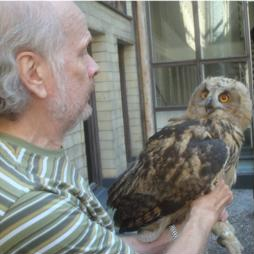Owls' Responses to Environmental Challenges
A special issue of Animals (ISSN 2076-2615). This special issue belongs to the section "Wildlife".
Deadline for manuscript submissions: closed (31 October 2023) | Viewed by 14681
Special Issue Editor
Interests: birds of prey; predator-prey interactions; environmental changes
Special Issue Information
Dear Colleagues,
Environmental changes due to anthropogenic habitat loss, fragmentation, and deterioration caused, in particular, by agriculture, forestry, and urbanization, as well as ongoing climate change, set considerable challenges for all kinds of organisms. Though some species may benefit from the environmental changes, others may fall to the verge of local or even global extinction. Some species may survive due to their capacity to more or less adapt to changing environmental conditions.
Owls are a group of predatory birds characterized by their largely nocturnal way of life. They are commonly dependent on an annually widely fluctuating food supply, in particular small microtines. Some species of owls prefer old forests that provide tree hollows or other suitable nest sites, while other species occupy open habitats that provide, at least from time to time, plenty of suitable prey. Owls have two main living strategies. Some species are strictly stationary, while some others are nomads, continuously searching for areas of rich food supply to settle down. As distributions shift and population densities change, new species interactions result in changes to competition and predation. Due to their wide habitat spectrum and being near the top of their food chains, owls have the potential to serve as indicators of various environmental changes.
For this Special Issue, we welcome original articles and reviews focusing on the adaptability of owls to all kinds of environmental changes, including habitat alterations and climate change. Both direct and indirect effects of climate change on habitat and food availability of owl populations are of interest.
Dr. Tapio Solonen
Guest Editor
Manuscript Submission Information
Manuscripts should be submitted online at www.mdpi.com by registering and logging in to this website. Once you are registered, click here to go to the submission form. Manuscripts can be submitted until the deadline. All submissions that pass pre-check are peer-reviewed. Accepted papers will be published continuously in the journal (as soon as accepted) and will be listed together on the special issue website. Research articles, review articles as well as short communications are invited. For planned papers, a title and short abstract (about 100 words) can be sent to the Editorial Office for announcement on this website.
Submitted manuscripts should not have been published previously, nor be under consideration for publication elsewhere (except conference proceedings papers). All manuscripts are thoroughly refereed through a single-blind peer-review process. A guide for authors and other relevant information for submission of manuscripts is available on the Instructions for Authors page. Animals is an international peer-reviewed open access semimonthly journal published by MDPI.
Please visit the Instructions for Authors page before submitting a manuscript. The Article Processing Charge (APC) for publication in this open access journal is 2400 CHF (Swiss Francs). Submitted papers should be well formatted and use good English. Authors may use MDPI's English editing service prior to publication or during author revisions.
Keywords
- abundance fluctuations
- breeding
- climate change
- competition
- habitat alterations
- nest site availability
- phenology
- population trends
- predation
- prey supply






